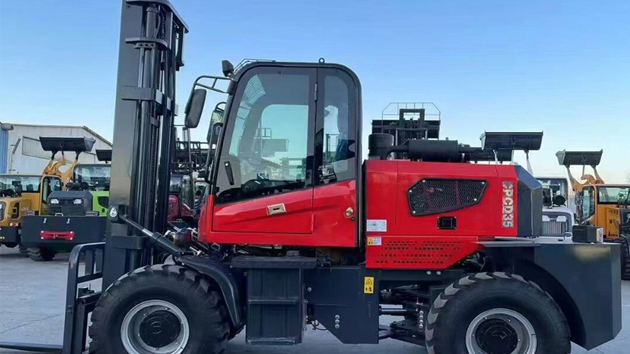The Financial and Operational Implications of Renting vs. Buying a Rough Terrain Forklift
2025-07-04 04:40:27
### H1: Cost Analysis: Renting vs. Buying a Rough Terrain Forklift The decision to rent or buy a rough terrain forklift hinges on financial and operational factors. Purchasing requires a significant capital outlay, with new models ranging from $50,000 to $120,000, depending on lift capacity and features. In contrast, renting a rough terrain forklift typically costs $1,500–$3,500 per month, eliminating upfront expenses but accumulating over time.
#### H2: Short-Term vs. Long-Term Financial Impact For short-duration projects (under 12 months), renting a rough terrain forklift is often more economical. Industry data shows that businesses save 20–35% in total costs compared to purchasing. However, for long-term use (3+ years), buying a rough terrain forklift yields a lower total cost of ownership (TCO), with depreciation and tax benefits offsetting initial expenses.
### H1: Operational Flexibility and Maintenance Considerations Renting a rough terrain forklift provides flexibility, allowing businesses to scale equipment based on project demands. Rental agreements often include maintenance, reducing downtime risks. Conversely, ownership demands in-house servicing, with annual maintenance costs averaging $3,000–$7,000 per rough terrain forklift.
#### H2: Industry Trends and ROI Projections A 2023 industry survey revealed that 62% of construction firms prefer renting rough terrain forklifts for projects under 18 months. However, sectors like logging and heavy manufacturing favor purchasing due to consistent usage. ROI for owned units typically breaks even at 2.5 years, assuming 70% utilization rates.
### H1: Key Decision Factors 1. Project Duration: Rent for <1 year; buy for long-term needs. 2. Budget Constraints: Renting avoids large capital expenditures. 3. Maintenance Capacity: Ownership requires dedicated servicing resources. For businesses evaluating a rough terrain forklift, aligning financial strategy with operational demands ensures optimal efficiency and cost control.












